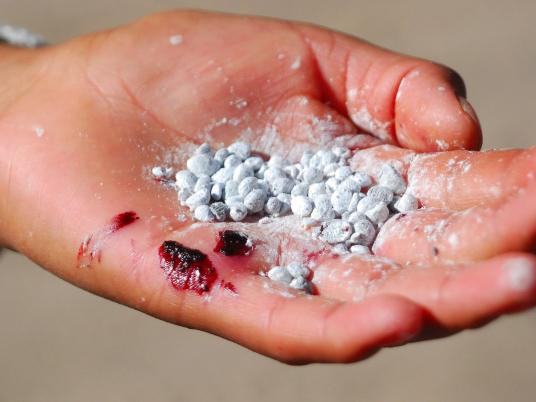
Experts from the Desert Research Center are evaluating the potential of establishing wide scale cactus farm operations across the country to raise cochineal insects. These insects, which thrive on cacti, produce a long-lasting, natural crimson dye called carmine which is consumable by humans. The dye is in demand by food, beverage, cosmetics and textile industries and is very costly, with one liter selling for thousands of dollars.
The seeds of the idea were planted when a delegation of Mexican experts visited Egypt a few years ago to conduct research on cactus farms in North Sinai. Cochineal insects are widespread in Mexico and famed there for their great benefits.
Female cochineal insects — which are small, round and soft-bodied, with scales and a beaked mouth — gather on cactus pads and feed on them, turning the cactus juices into carminic acid during the digestive process, explains Usama Abou al-Gheit, a specialist in economic entomology. That acid is the main source of natural carmine dyes.
Ismail Abdel Galil, the former head of the Desert Center, wants to start producing natural dye here in Egypt by infecting local cacti with cochineal insects.
Many countries around the world, including Mexico, Australia and South Africa, have started cactus farms specifically to attract these insects in order to produce carmine, providing a new income source for agricultural workers in those countries, Galil explains.
“Because 96 percent of Egypt’s land area is dry, [the country is well suited to] having such farms. This will provide job opportunities for a lot of unemployed workers,” he says.
“A lot of businessmen, especially those who work in food and textile industries, have called me asking about ways of producing such natural dyes and making the greatest use of such an insect, especially after the prices of dyes increased enormously during the last few years,” Galil adds.
In his opinion, Egyptians are just realizing the true value of cacti, which, in addition to supporting the cochineal insect industry, are also a good source of nutrition for desert residents.
“When the Mexican minister of environment visited Egypt, she wondered why Egyptians only eat the cactus fruits, neglecting the cactus pads that contain important nutrients. She showed us how they can be cooked to produce different healthy, delicious meals,” Galil says.
However, research still needs to be done before implementing the project, warns Yasser Ali, an assistant professor of medical plants.
“Before bringing such an insect to Egypt, many studies must be conducted to understand the insect’s behavior and evaluate its ecological effect on the Egyptian environment and other agricultural crops,” he says.
“If the studies prove the move won’t be harmful to the environment, a first batch of insects will be introduced on a small scale to make sure they don’t turn into pests. We will try to have a team of specialists in different fields including entomology, environmental impact, medical plants and food industries to help make a decision about the potential of increasing the numbers of this insect in Egypt soon,” Ali concludes.
This piece was originally published in Egypt Independent's weekly print edition.

